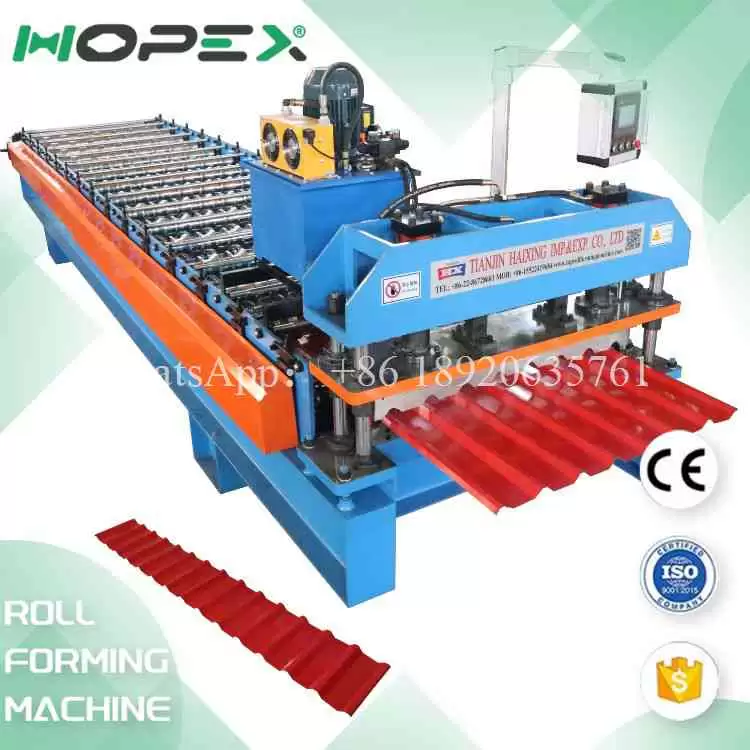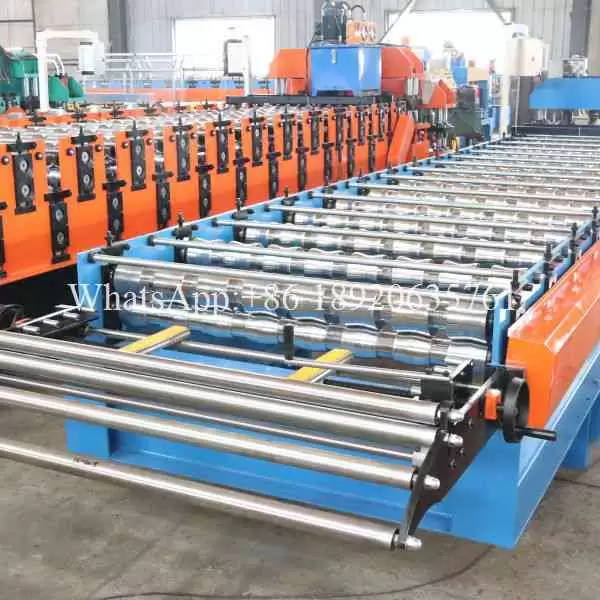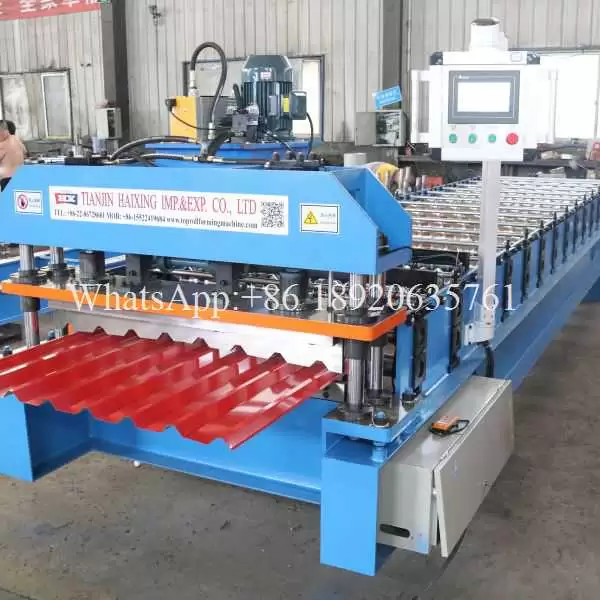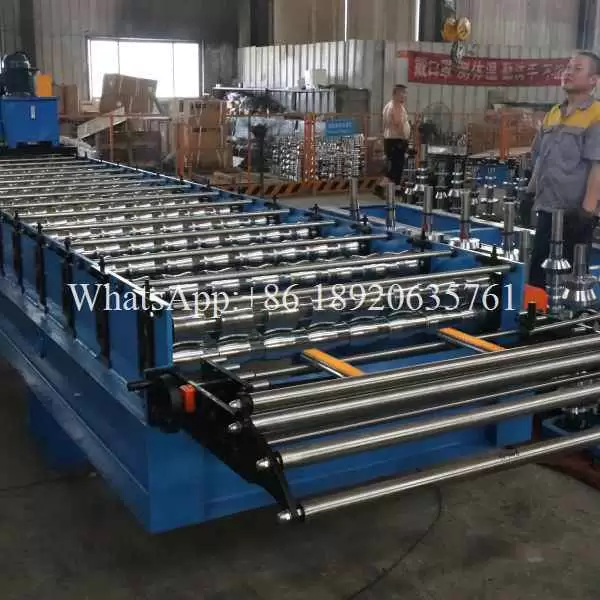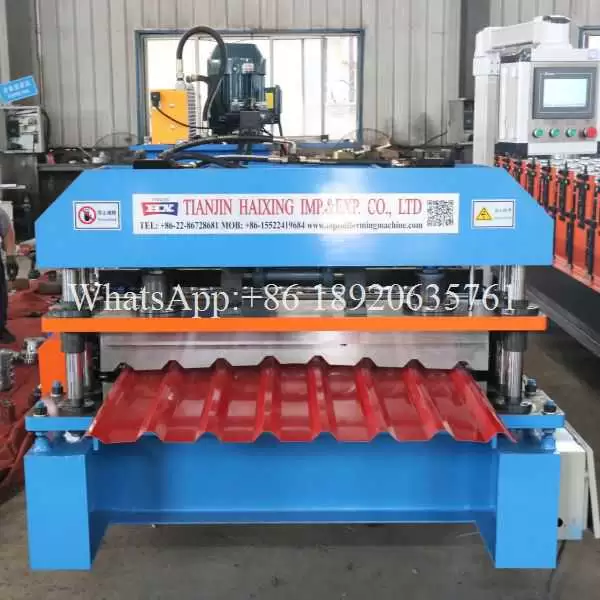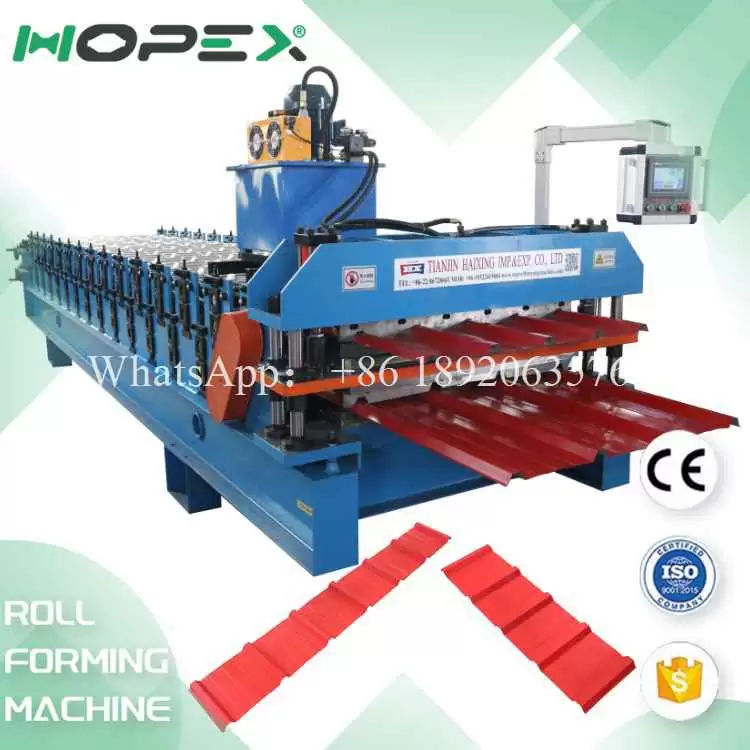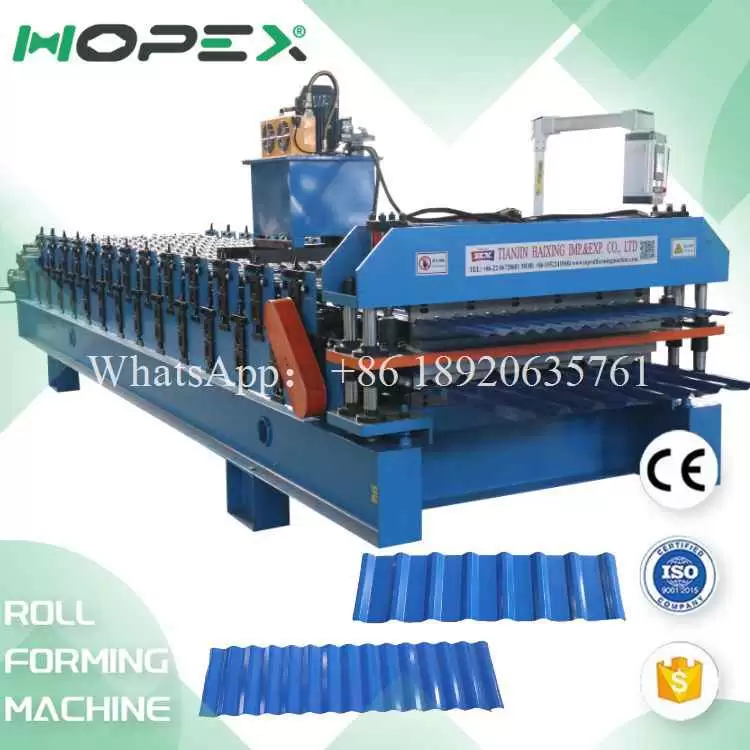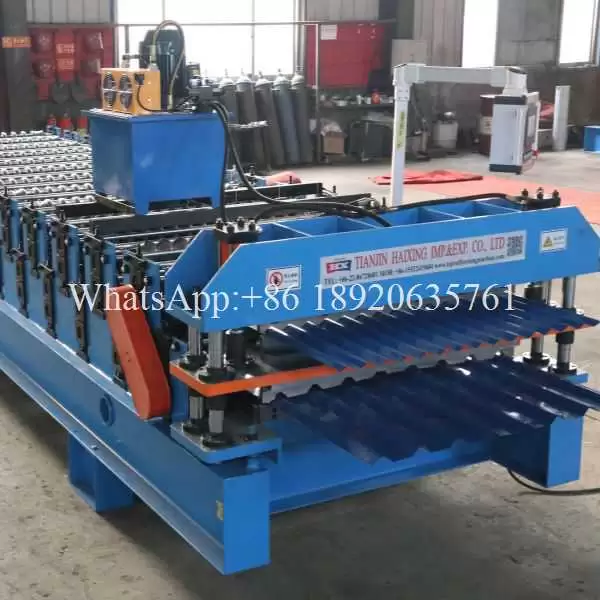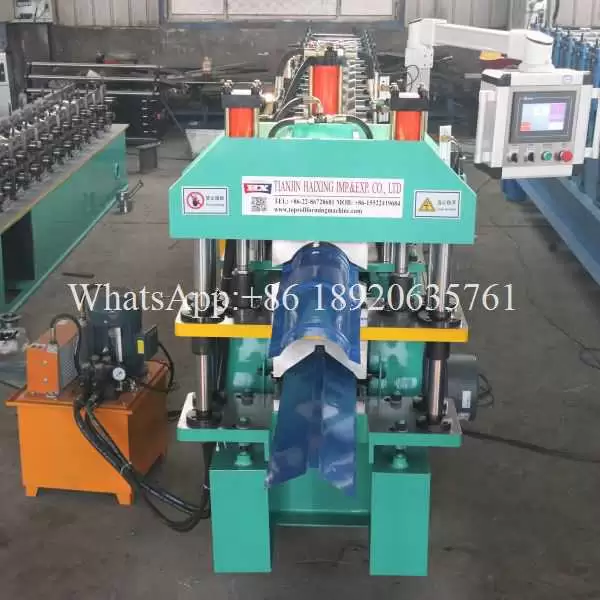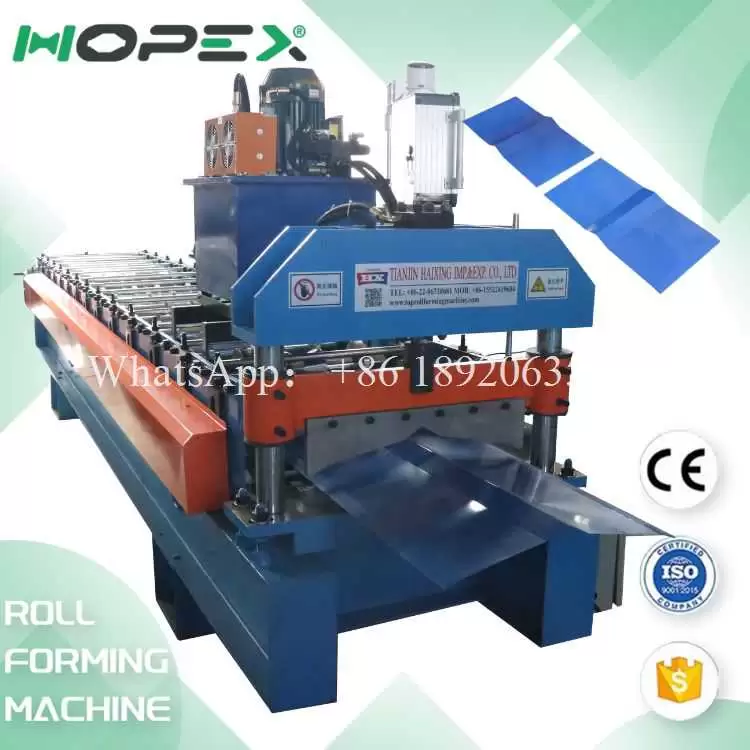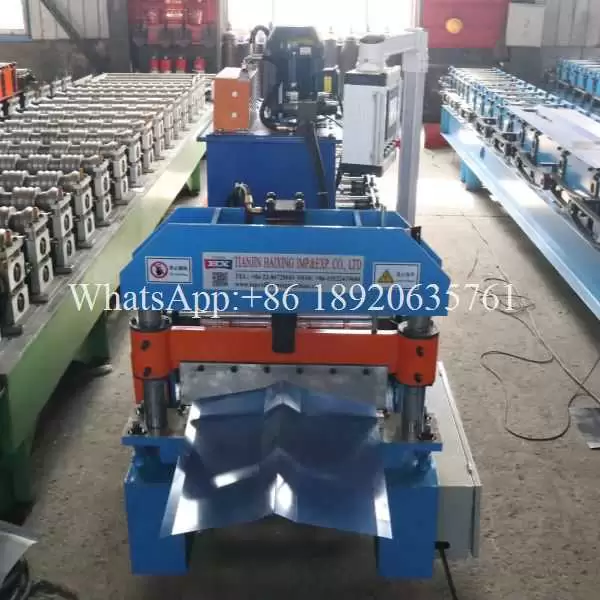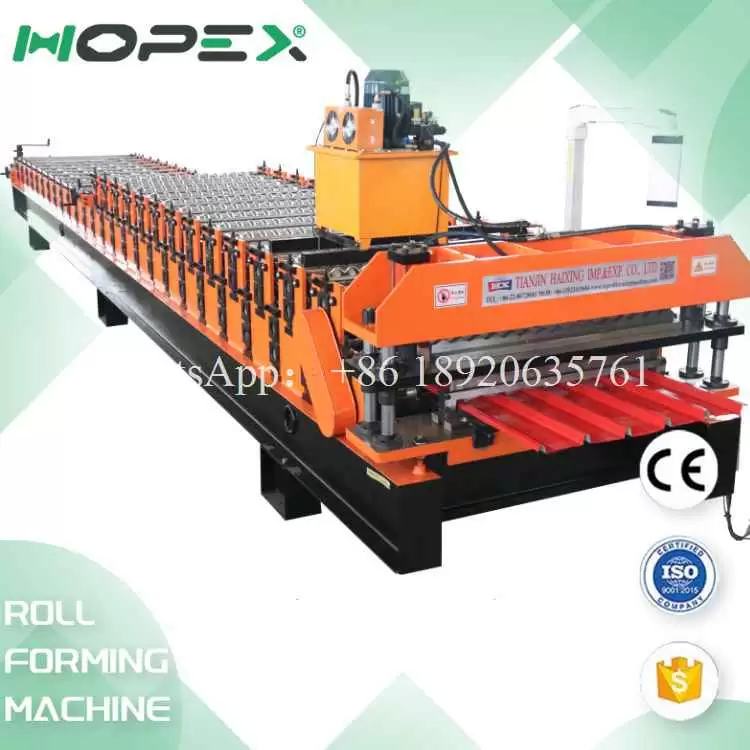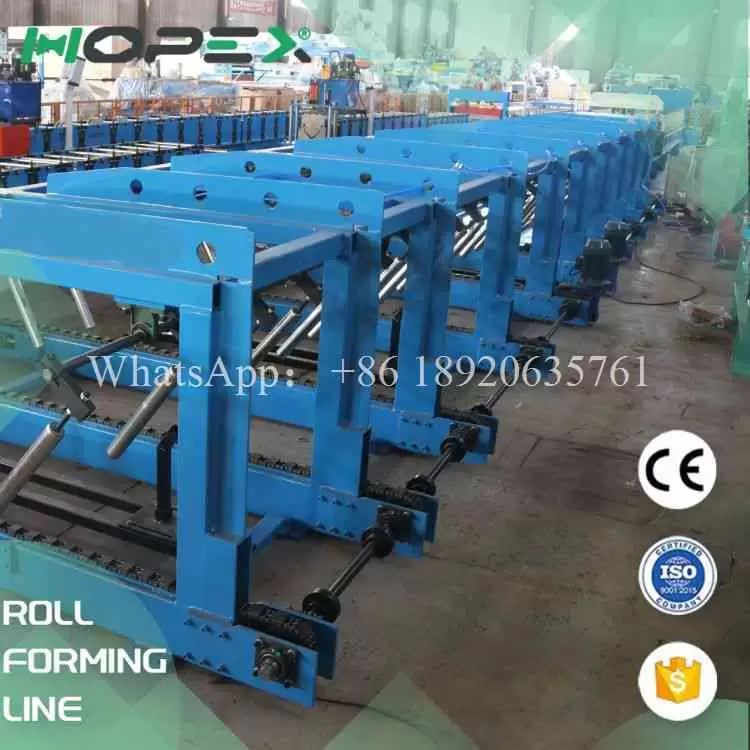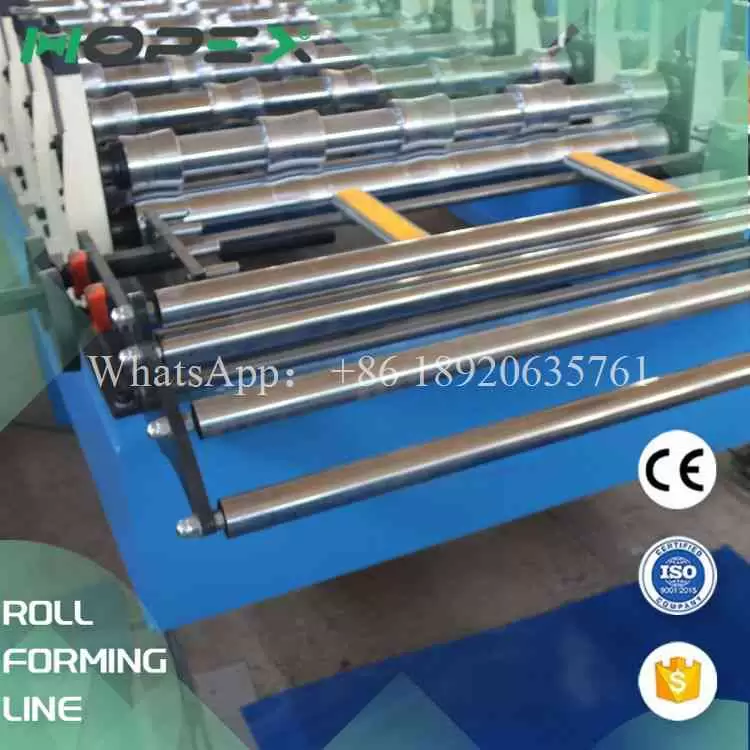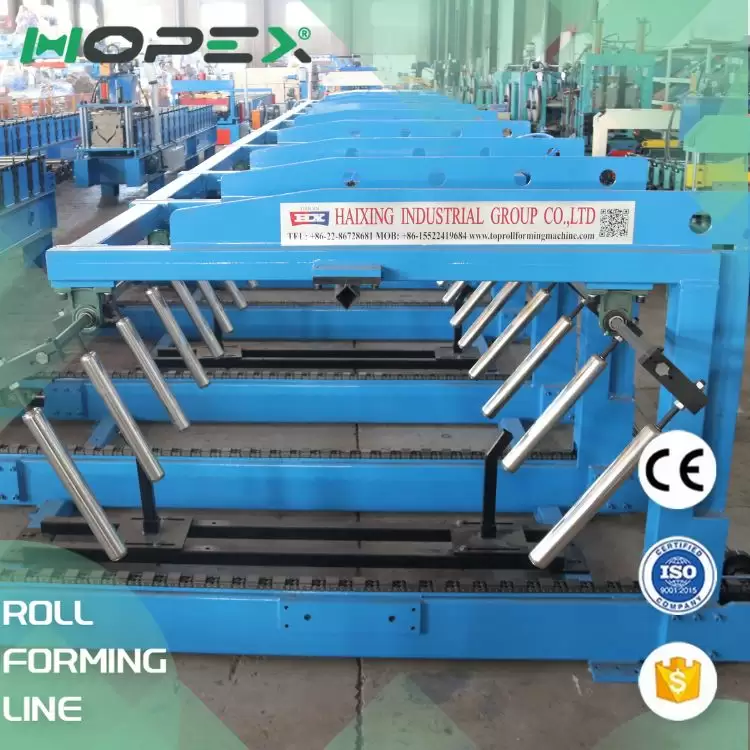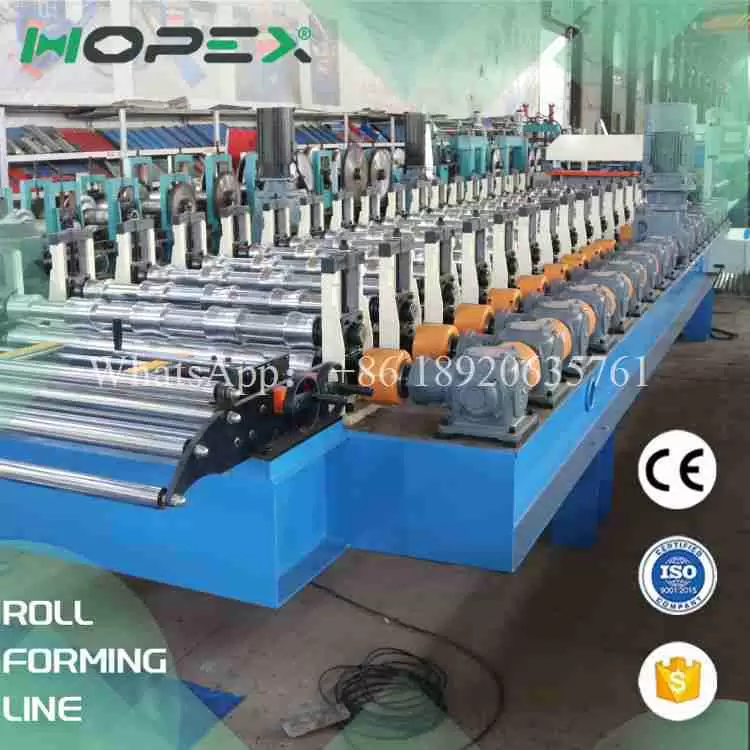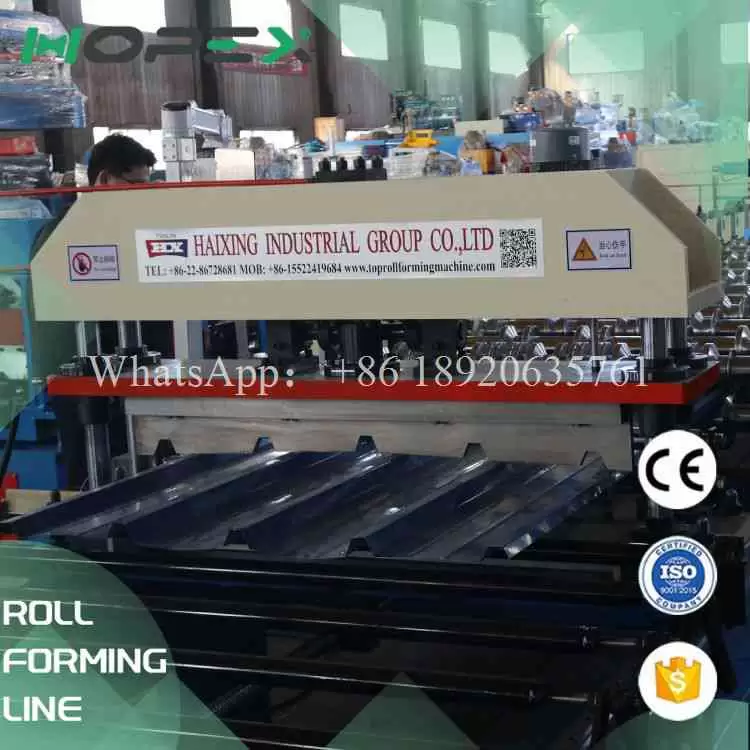Product
Trapezoidal Roll Forming Machine Line
The Trapezoidal Roll Forming Machine Line: Precision Engineered for Robust Metal Roofing
The demand for durable, cost-effective, and structurally superior roofing solutions continues to drive innovation in construction materials manufacturing. At the heart of producing one of the most reliable and widely used profiles – the trapezoidal metal roof sheet – lies a sophisticated piece of industrial equipment: the Trapezoidal Roll Forming Machine Line. This fully integrated production system transforms raw metal coils into precisely formed, high-strength trapezoidal panels with remarkable efficiency and consistency, making it an indispensable asset for manufacturers serving the commercial, industrial, and agricultural building sectors.
Roll Forming Process Workflow Diagram

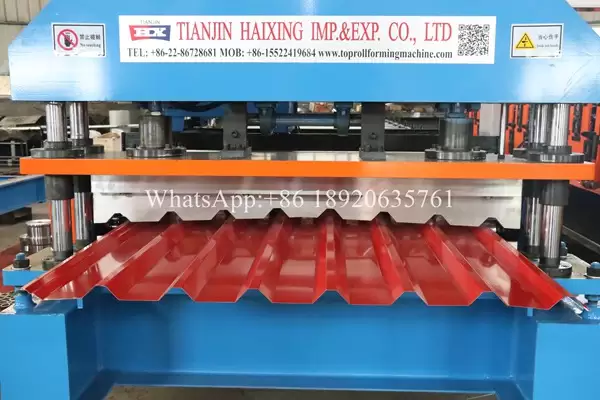

More parameters
| Product Name | Trapezoidal roll forming machine Line |
| Main motor power | 5.5 kw |
| Hydraulic station | 4 kw |
| Produce speed | 10-15 m/min |
| Shaft material | 45# Steel |
| Touch screen | PLC or customized according to customer requirements |
| Rolling materials | Cr12MoV, heat treatment HRC58-62℃ |
| Cutting blade material | Cr12MoV, heat treatment HRC58-62℃ |
| Roller diameter | Φ70 mm |
| Voltage | 220v 60hz 3p be customized |
| Feeding thickness | 0.3-0.8 mm |
| Rows | 15 |
| Feeding width | 914/1220mm |
The defining characteristic of the trapezoidal roll forming machine line is its specialized focus on creating the trapezoidal profile. This profile features a series of flat pans connected by sharply angled, steep sidewalls, forming a distinctive trapezoid shape when viewed in cross-section. This design is not merely aesthetic; it provides exceptional load-bearing capacity, superior spanning capabilities, excellent drainage, and enhanced resistance to ponding water compared to simpler corrugated profiles. Producing this profile consistently and accurately requires the coordinated effort of several precisely engineered stations within the trapezoidal roll forming machine line:
Decoiling (Uncoiling): The process begins with loading a large coil of raw material – typically pre-painted galvanized steel (PPGI), Galvalume, or aluminum – onto a powered decoiler. This unit smoothly unwinds the metal strip, feeding it continuously into the line. Modern decoilers often feature hydraulic expansion mandrels, motorized arms for coil handling, and tension control systems to ensure smooth, consistent material feed, critical for the precision forming to follow in the trapezoidal roll forming machine line.
Leveling (Flattening): Metal coil inherently possesses residual stresses and curvature (known as "coil set" or "crossbow") from the coiling process. Feeding this uneven material directly into forming rolls would result in poorly shaped panels with waviness or buckling. The leveling station, a critical component of the trapezoidal roll forming machine line, employs a series of alternating precision rollers. These rollers progressively flex the metal strip beyond its yield point in opposite directions, effectively eliminating internal stresses and delivering a perfectly flat, uniform strip to the forming section. This step is paramount for achieving the crisp angles and flat surfaces characteristic of high-quality trapezoidal panels.
Roll Forming (The Core Process): This is the heart of the trapezoidal roll forming machine line. Here, the flat metal strip journeys through a series of meticulously designed roll forming stands. Each stand contains a pair (or set) of hardened steel rolls with precisely machined contours. As the strip passes sequentially through these stands, the rolls progressively bend and shape the metal incrementally, step-by-step, into the complex trapezoidal profile. The number of forming stands varies depending on the specific profile complexity (e.g., the height and angle of the ribs), material thickness, and desired production speed. The precision engineering of these rolls and their alignment within the trapezoidal roll forming machine line directly determines the dimensional accuracy, profile consistency, and surface quality of the final product.
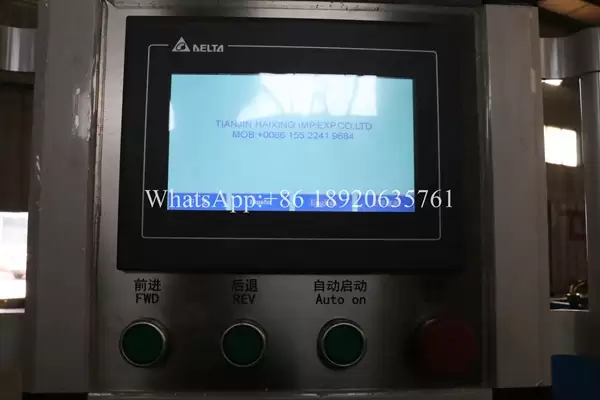
Hydraulic Shearing (Cutting to Length): Once the continuous strip has been fully formed into the trapezoidal profile, it reaches the cutting station. A powerful hydraulic shear is employed. Sensors accurately measure the length of the moving formed sheet. When the pre-set length is reached, the hydraulic shear rapidly descends, making a clean, square, and burr-free cut across the entire width of the profile. The hydraulic system provides the immense force necessary for a clean cut through the thicker material often used for trapezoidal roofing, a key capability within the trapezoidal roll forming machine line.

Run-out and Stacking (Palletizing): The freshly cut trapezoidal panel is conveyed away from the shear onto a run-out table. This table, often equipped with powered rollers or belts, transports the panel smoothly to the stacking area. An automatic stacking system (which can be pneumatic, hydraulic, or servo-driven) then carefully collects the panels, aligning them neatly into uniform stacks (bundles) of a predetermined count. The stacker then lowers the completed bundle onto a pallet or directly onto a conveyor for strapping and removal. Automated stacking is crucial for maintaining panel quality (preventing scratches), ensuring operator safety, and achieving high throughput in a modern trapezoidal roll forming machine line.
Our photos with our customers

About us
HOPEX (Wuxi) Intelligent Technology Co., Ltd.: Pioneering Roll Forming Innovation Since 1996
Founded in 1996 with a dedicated R&D team for roll forming technology, HOPEX has evolved into a global force in intelligent manufacturing. Established in Wuxi in 2003, we launched our core product lines—semi-automatic purlin machines, cable tray machines, and guardrail machines—laying the foundation for our commitment to 100% customized solutions.In 2016, we doubled our team and expanded our offerings to include solar strut machines and heavy-duty leveling/slitting lines, while strengthening R&D for our flagship products. By 2022, HOPEX achieved 100% sales growth and revolutionized production through full automation, upgrading all equipment to smart manufacturing standards and growing our R&D team to 10+ experts.Today, we export cutting-edge machinery worldwide—serving Russia, Australia, India, the Middle East, Southeast Asia, and beyond—as we fully enter the global market in 2025. Our vision is clear: to be the global leader in roll forming technology, making precision engineering easier and hassle-free for industries everywhere.
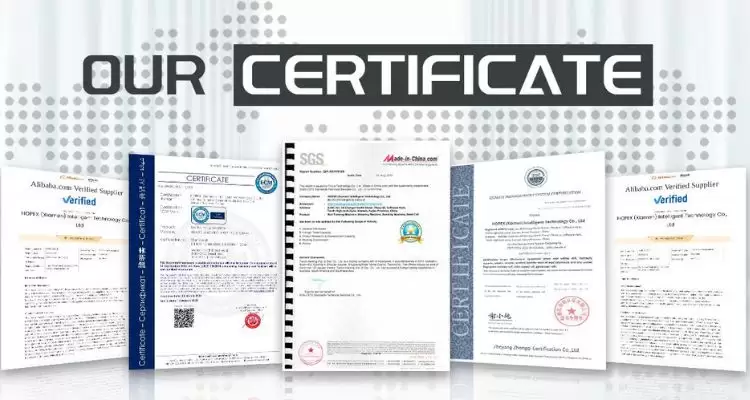
FAQ
Q: Are you a trading company or a factory?
A: We are a factory with a professional production team and service consciousness, just for exporting various types of cold roll forming machines.
Q: Can a machine produce only one style of panel profile?
A: Not complete. Suitable for a Trapezoidal Roll Forming Machine Line. It can produce more than 3 panels.
Q: How long does it take to manufacture the machine?
A: In general, the Trapezoidal Roll Forming Machine Line be completed in 20 to 45 business days. But if you need machines urgently, we can save you time.
Q: Is there quality control when producing the production line?
A: Yes, we have a team that is responsible for quality control, including the laying of raw materials, processing rolls and other parts, processing, assembly, testing, and packaging on the roll surface and shaft.
Q: What can you do if the machine breaks?
A: Our machine is warranted for 24 months. If the damaged part cannot be repaired, we can send a new part to replace the damaged part, but you will need to pay the courier fee yourself. If the warranty period is exceeded, we can resolve the issue through negotiation, and we provide technical support for the entire life cycle of the device.

